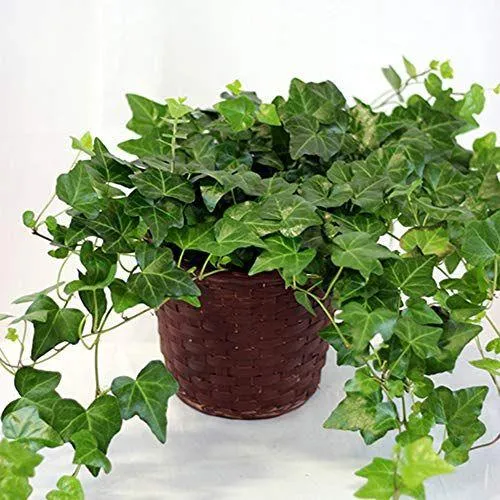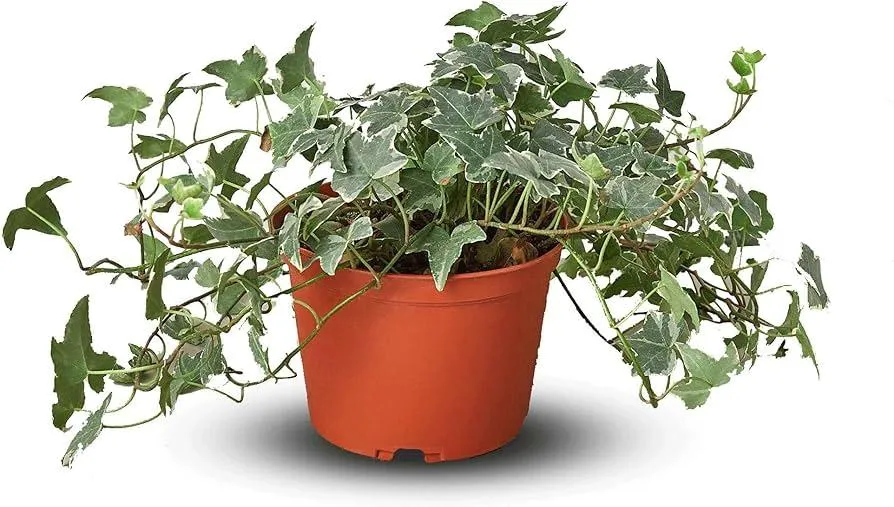A Complete Guide to Caring for Ivy Plants
Ivy plants are one of the most popular types of houseplants because they are so easy to care for and add beautiful greenery to any indoor space. However, keeping an ivy plant healthy can sometimes pose challenges. In this comprehensive guide, I’ll cover all the basics of ivy care as well as some tips and tricks I’ve learned from my own experience growing ivy plants.
Choosing an Ivy Variety
The first step is selecting the right ivy for your home. Some common varieties include English ivy, Swedish ivy, and needlepoint ivy. English ivy is very hardy and tolerates low light. Swedish ivy has beautiful dark green leaves and only needs moderate light. Needlepoint ivy has small leaves that give it a fuller, bushier appearance.
Consider where you plan to place the plant. English ivy grows well in shady corners while others prefer brighter indirect light. Look at the size the plant will reach as an adult too – some varieties can climb while others stay low and bushy. Check with your local nursery for variety recommendations based on your space.
Soil and Container Requirements
Ivy grows best in well-draining potting soil. The soil should contain components like peat moss or compost to retain moisture while still allowing excess water to pass through. Avoid soil that stays soggy.
For containers, choose something with drainage holes in the bottom. Terra cotta, plastic, or glazed ceramic pots all work well. Use a container about 2-4 inches wider than the root ball. Replanting into a larger pot too early can stunt growth. Repot only when roots start to emerge from the drainage holes.
Watering Needs
Ivy requires moderate moisture but shouldn’t be left sitting in water. Allow the top inch of soil to dry out between waterings. Feel the soil with your finger to check moisture levels. Water thoroughly when dry and discard any excess water collected in the saucer or plate below the pot.

Mist leaves occasionally if air is very dry. But avoid getting water on the leaves, which can lead to spots. From my experience, ivy grows best with infrequent, deep waterings rather than daily shallow waterings.
Light and Temperature Requirements
Most ivy varieties thrive in medium to low indirect light. Place plants near an east or west-facing window to filter sunlight. Avoid direct southern exposure which can scorch leaves. Rotate plants occasionally for even growth. Keep ivies away from drafty windows or vents where temperatures fluctuate.
Ivy can tolerate indoor temperatures between 60-80°F. They may drop leaves if exposed to temperatures below 50°F for extended periods. During winter, move plants slightly farther from windows where cold drafts are possible.
Fertilizing
Fertilize ivy plants every 4-6 weeks during the spring and summer growing seasons with a balanced, water soluble houseplant fertilizer. Dilute fertilizer to half or quarter strength as indicated on the label and water thoroughly after application. Cut back on fertilizer in fall and winter when growth slows.
As plants age, a well-draining potting mix can become depleted of nutrients. Replace potting soil every 2-3 years for optimal growth. Loosening and aerating the existing soil with a fork can help in the interim too.
Pruning
Prune ivy as needed to maintain a desirable shape. Snip off longer, leggy stems to encourage bushier growth. Trim any dead or damaged leaves with sterile scissors or pruners.

Ivy is very resilient and can be pruned heavily in spring to tame unruly growth without harm. New growth will quickly fill in bare areas. Be careful not to over-prune, as ivy recovers slowly from severe pruning. Ease back pruning in fall to allow plants to focus on root growth for winter.
Pests and Diseases
Common pests like spider mites can plague ivy. Check undersides of leaves often for pests and treat immediately with insecticidal soap or neem oil if spotted. Good hygiene and adequate spacing between plants helps prevent issues. Repotting in fresh soil can rid root issues too.
Leaf spots may appear due to bacteria or fungus. Remove infected foliage promptly and avoid overwatering which exacerbates the problem. Never mix plant varieties together which can spread disease. Increase air circulation and adjust cultural conditions to prevent recurrence.
Propagation
Ivy is very easy to propagate from stem cuttings. Simply remove 4-6 inch clippings from the parent plant in spring or early summer, wipe off excess sap, and dip the end in rooting hormone. Place cuttings in a glass of water or potting mix and keep roots warm and moist. From my experience, cuttings usually root within 3-4 weeks.
Uses and Maintenance
Beyond brightening indoor areas, ivy also makes a nice hanging basket or tabletop plant. Consider training vines onto a small trellis or moss pole for an eye-catching display. Dust leaves occasionally and wipe down with a damp cloth as needed.
Reposition plants regularly to encourage even growth. Rotate pots for a balanced appearance. Prune or trim stems and remove any dead or damaged foliage on an ongoing basis to keep ivy looking its best. With some TLC, ivy plants can last for years indoors!

I hope this guide has provided helpful answers to all your questions about caring for ivy houseplants. Let me know if you need any clarification or have additional questions. With the right growing conditions, ivy plants can be incredibly low maintenance additions to your indoor spaces. Enjoy your new greenery!
House Ivy Care Tips
| Light | Medium to bright indirect light |
|---|---|
| Soil | Well-draining potting mix |
| Water | Water when top inch of soil is dry |
| Humidity | Mist leaves to increase humidity |
| Fertilizer | Feed monthly during spring and summer |
| Pruning | Prune to control size and shape as needed |
| Pests | Check for spider mites or mealybugs |
| Propagation | Take cuttings to make new plants |
FAQ
-
How often should I water my ivy?
Ivy needs moderate watering. Water it when the top inch of soil feels dry. Basically, give it a drink about once a week. Depending on conditions like sunlight and temperatures, you may need to water more in hot weather.
-
What kind of light does ivy need?
Ivy thrives in medium to low light. It grows well in bright indirect light like from an east or west-facing window. However, it can adjust to quite low light too. Keep it out of direct noon sun, which may burn the leaves. At the same time, it needs some sunshine for good growth.
-
How do I fertilize my ivy?
Fertilize ivy every few months during the spring and summer with a houseplant fertilizer. Dilute the fertilizer to half the strength recommended on the label. Strong fertilizer may damage ivy’s roots. Probably best to err on the side of under-fertilizing than overdoing it.
-
When should I repot my ivy?
Generally, repot ivy every couple years or when you notice the roots growing out of the drainage holes. Use a pot with drainage holes that’s only slightly larger than the current one. Repotting into too large a container can keep the soil wet for too long, leading to root rot. You can also divide an overgrown ivy to make new plants.
-
How do I prune my ivy?
Prune ivy periodically to keep it bushy and encourage new growth. Cut off long vines that have lost their grip on the support or are trailing on the floor. Also trim off any non-vigorous or leggy growth. Use clean sharp pruners. The cut ends will develop roots if they touch the soil. Some experts say to prune just after blooming to avoid removing next year’s flower buds.

-
Why are some of the leaves on my ivy turning yellow?
Yellow leaves could mean the plant is not getting enough light, is in a draft, or the soil has poor drainage. It may need more fertilizer too. However, a few yellowing leaves are normal now and then. Sometimes ivy just gets a touch of a disease or gets overwatered. Unless a lot of foliage is affected, don’t panic. The plant may just be sort of changing with the seasons.
-
What type of plant is English ivy?
English ivy (Hedera helix) is a flowering vine in the grape family. It climbs with root-like footpads on its stems. This hardy and resilient plant grows well indoors but also thrives outside in USDA plant hardiness zones 5-9. In the wild, it’s native to Europe, North Africa and Asia. So in summary, English ivy is a woody, evergreen trailing or climbing vine valued for its versatility and lush foliage!
There you have the basics on ivy care. Let me know if you have any other questions! Caring for houseplants like ivy is super rewarding but does take a bit of experimenting to get the hang of. Don’t get too down if yours gets a funky looking leaf now and again. With a little TLC, it should bounce back before too long.
